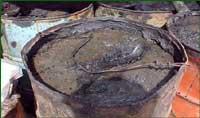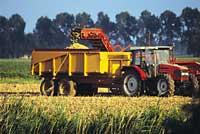Pesticides harmful to Africa
2001/03/04 Mendiburu, Joana - Elhuyar Zientziaren Komunikazioa
What would you do to earn money? In case of spontaneous response, more than one will be willing to everything or everything. If we take it seriously, most people think that there is something to think about and that nothing can be done. For example, it considers that any job offer cannot be accepted or that it is not lawful to harm the health of others by money. But there are those who don't think like that, for example, people who have no scruples to sell thousands of tons of poor quality pesticides to developing countries to move their businesses forward.
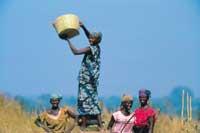
This
is a novel research that, like most of those who access these pages, does not bring any good news or enthusiasm. The report prepared by the Food and Agriculture Organization of the United Nations (FAO) and the World Health Organization (WHO) reports that 30% of pesticides sold in Africa do not meet minimum international quality standards. In these countries pesticides are mainly used for agriculture, but also to preserve public health. For example, to kill mosquitoes of the genus Anopheles that transmit malaria and parasites that transmit Chagas disease, a very polluting and dangerous DDT pesticide is used. Every year one million people die contaminated by malaria and 16 million die from Chagas disease.
In the words of Gero Vaagt, who has participated
in this report, "different classifications can be made between poor quality pesticides. On the one hand, there are pesticides of inadequate composition and, on the other, those that have bad labels or are expired."
Among the
pesticides of improper composition are those containing very laminar substances for man and fauna and those that are contaminated by impurities. In many cases, the concentration level of active components is usually higher than permitted. In addition, in ignorance, peasants extend larger quantities than necessary and insects become increasingly resistant.
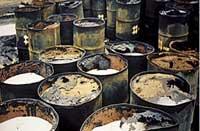
On the other hand, there are pesticides containing misinformation labels. Normally the label is the only source of information about the product for the consumer, but not convincing producers, there is no information about the level of the active component, the expiration date and the level of risk of the chemical. According to FAO data, in developing countries there are 100,000 tons of expired pesticides, of which 20,000 correspond to Africa. These chemical residues, which were originally intended for agriculture, have become a danger to the environment and its inhabitants. Since 1994 this situation is being denounced and to this day a large number of sacks of pesticides and drums are opened that have not yet control.
When you mediate money...
Selling bad quality pesticides is huge. Last year, pesticide sales reached US$32 billion (5.6 billion pesetas or £224 million), of which US$3 billion was sold to developing countries. Not all were of poor quality, but it has been estimated that the value of these harmful pesticides was 900 million dollars (157.5 billion pesetas or 7020 million).
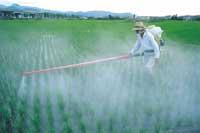
In addition, FAO members have denounced that controlling these sales requires a lot of money and that it will not be easy to stop these definitive illegal sales. Moreover, especially in countries around the Sahara, expired pesticides are stored anywhere. Warehouses are not regulated or comply with any security measures. It is estimated that cleaning these polluted and dangerous sites would cost $500 million.
However, governments and institutions in affected countries are encouraged to adapt their regulations to the requirements of FAO and WHO. Thus, in those countries, as in other countries, the sale of these hazardous chemicals would be regulated by law. In addition, with no money to carry out adequate controls, insecticide producers would pass FAO and WHO controls to ensure the quality of their products.
FAO's goal is to allow developing countries to decide which chemicals they want to import and which do not. To do this, it is essential to provide adequate information about each chemical, specifying the health and environmental risks.
Simple irrigation pumps for Africa
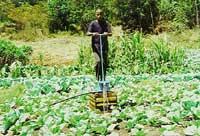
In addition to insect pests, one of the main problems of African farmers is drought, there is no need for extra studies. Just look at some of your photos. But to realize the real gravity of this problem, it is worth reading the report that FAO published last December. It shows that, due to production problems resulting from water scarcity, 28 million inhabitants of the smaller villages of the Sahara do not eat enough and suffer serious health problems.
But despite not abundant rainfall, as indicated in the report, the main problem is not lack of water. There is water, but not within reach, but underground. The problem is therefore the system of groundwater extraction and irrigation of farmland. However, it has become clear that African farmers do not need irrigation systems in developed countries. Small farmers have not had enough money to buy, maintain and launch the irrigation pump and, ultimately, are not adapted to their infrastructure and resources. It is therefore useless that technologies from developed countries are being brought to Africa.
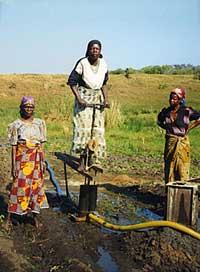
Until now, African farmers used a very old irrigation system. To remove the water from the water table a large hole was made from which the water was extracted in a few containers and transported to their lands. Besides being very laborious, it is a very slow work.
From
now on, thanks to a person who knows the problem in its entirety, they will have a simple pump to extract the water from the subsoil. It is a pump that absorbs water by pedaling, using a very simple and economical material. These pumps are made of wood and, when operated with the legs, 5 km3 of water can be extracted per hour. They do not need electricity and, in addition, being produced in it, they also serve to develop the local economy. Often,
the most suitable systems to deal with local problems are certainly far away.
Published in the supplement Natura de Gara

Gai honi buruzko eduki gehiago
Elhuyarrek garatutako teknologia




